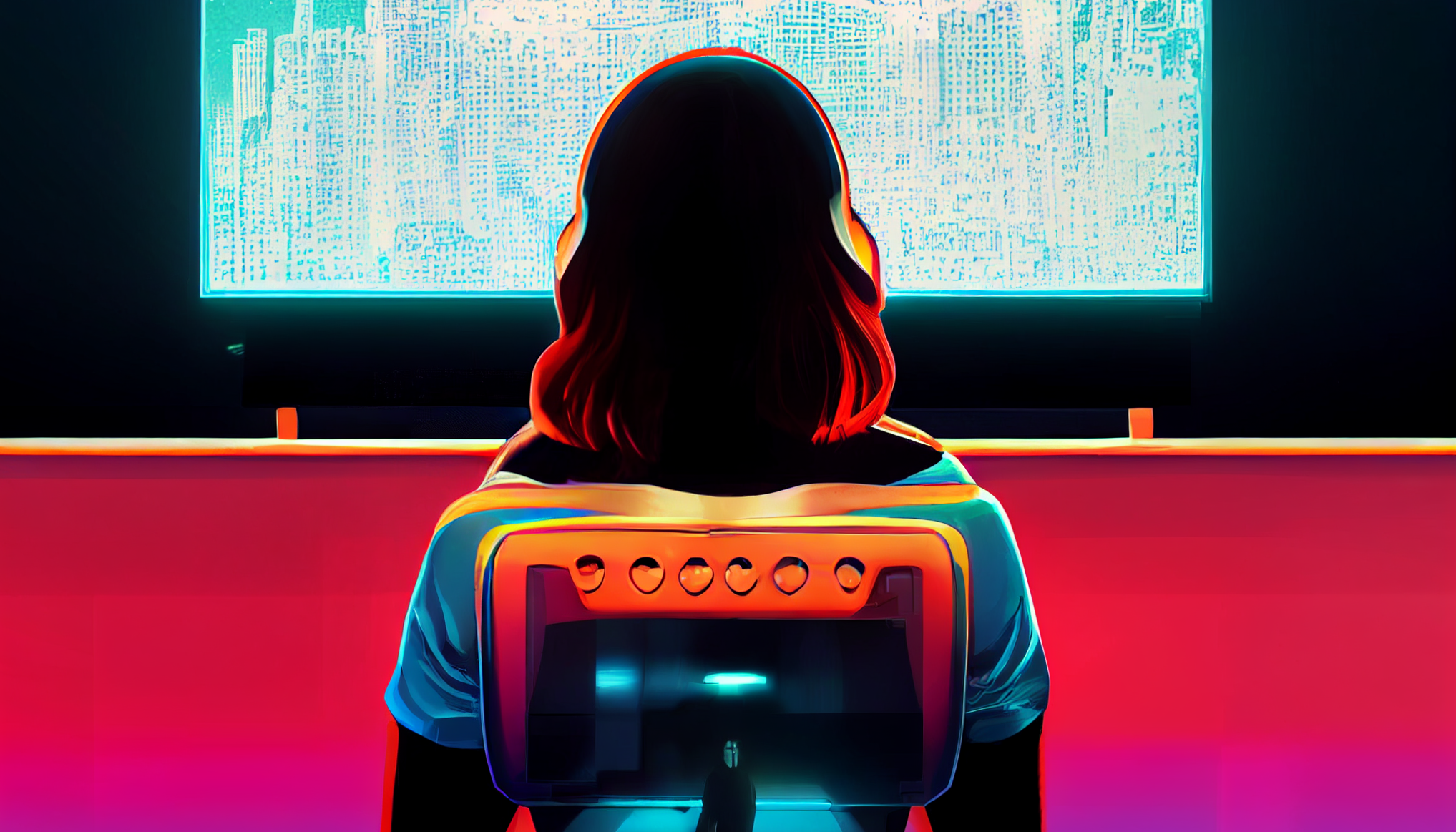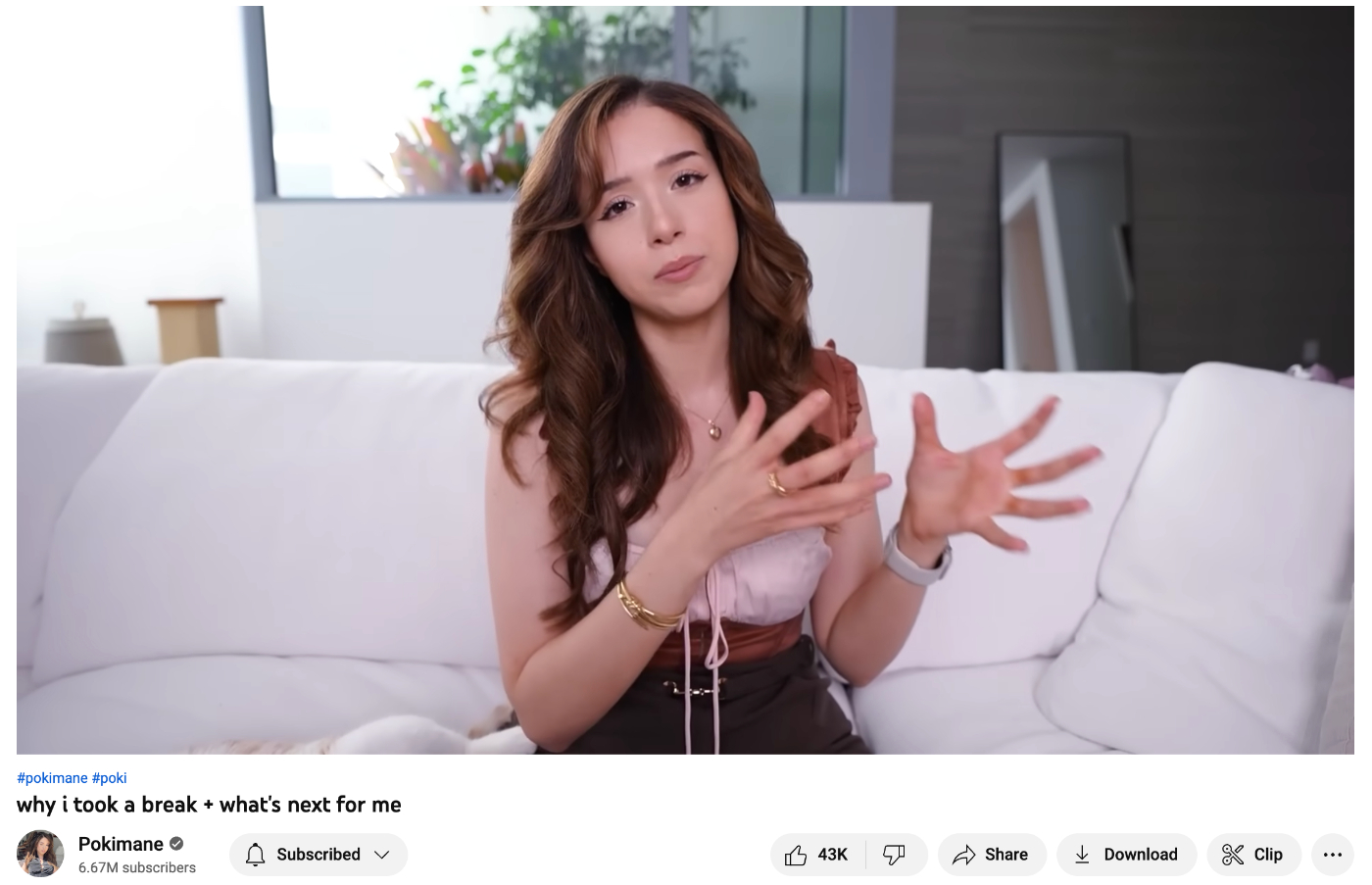
In October 2022, popular streamer Sweet Anita posted a message in her Discord community and then to Twitter: she needed to take a break from Twitch. “I’ve been pushing through everything and turning up to stream, drinking sometimes to reduce the discomfort on stream,” she said. “I’ve been scared to take days off.” While live with some of her 1.9 million followers on Twitch, she was personable and affable, discussing her Tourette's Syndrome or providing commentary on viral videos. On Twitter, she posted humorous quips to her 378,900 followers, and on Discord she interacted regularly with her nearly 38,000 community members. But behind the scenes, she was struggling.
Sweet Anita is not the only creator turning away from Twitch because of the pressures of live streaming and the demands dictated by success on the platform. Littlesiha and Ninja announced their own breaks from Twitch, either extended or short-lived. In July 2022, popular streamer Pokimane revealed she would take time off, pausing near-daily appearances on Twitch and halting production of content across social media. When she returned online two months later, she expressed appreciation for her community in a heartfelt video but noted she would stream less frequently on Twitch going forward.
Among many reasons for her choice, Pokimane cited the challenges of being exposed to a constant feedback loop and a desire to live life beyond extended daily streams. “There's such a pressure on streamers to follow every trend, to capitalize on viewership, to stream longer than the guy next to them or the guy that they share similar viewership with,” she said in the video, discussing her seven years of streaming on Twitch. “It's just a hyper competitive industry.”
That competitiveness on the platform extends both to larger streamers maintaining their dominance to smaller streamers finding their footing (and an audience). For the former group, it’s not uncommon to see streamers live with their audience for over 40 hours a week. For the latter group, which includes mostly part-time creators juggling work or school, streaming can start as a passion project and turn into a time-consuming obligation.
Creator burnout is rampant across all platforms. In part, this is the work of the platforms and the monetary and algorithmic incentives they attach to creating content. TikTokers have revealed the burnout that arises from keeping up with platform trends while navigating the online harassment that comes with virality, while YouTubers are compelled to stick with a regular upload schedule, mimicking television programming. On Instagram, creators are incentivized through bonuses from Meta to expand their content to formats like Reels, using all aspects of the platform to get the most visibility.
But on Twitch, where discoverability is a challenge when you’re offline and your hours spent streaming each month are tightly coupled with your earnings, burnout can be especially common for streamers staying live to stay relevant. Popular streamer and YouTuber Chris Melberger pointed to the catch-22 of it all—taking a week off Twitch or changing your schedule means curtailing growth; refusing to do so means burnout.
It’s not just the platforms that apply pressure to creators. Fans, often developing parasocial relationships with the people they watch live for hours each day, can keep creators on a content hamster wheel. Every platform has its own unique ways of creating a sense of intimacy between creators and their followers. On Twitch, it’s the straightforward approach of creators spending endless hours live on camera, and directly interacting with fans in chat, that creates these bonds.
Across a broad range of streamers—gamers, dancers, political commentators, or those “just chatting”—it’s common to spend eight, 10, or 12 hours per day on stream. Some streamers attempt 24-hour streams—sometimes in near continuous conversation, sometimes sleeping. Twitch streamer Emilycc has been on stream 24-hours a day for over a year, setting a record on the platform. This level of commitment is what many fans have come to expect and how streamers make their money, endlessly entertaining fans live on camera, trading their personalities for subscriptions. Even after revealing the weight of burnout, streamers who find their revenue plummeting when they take any time away often return to the platform. On Twitch, you can never log off.
How Twitch incentivizes logging—and staying—on
Despite the dream of making a living on Twitch—playing video games or talking to your virtual friends live—the creator economy tends to follow a power law. Most of the resources, money, and fans in the ecosystem are accrued to a small number of creators. In a 2021 leak of Twitch’s user data that included creator payouts, it was revealed that from August 2019 to October 2021, the top 100 streamers on the platform made anywhere between $9,626,712.16 and $886,999.17.
According to an analysis from the Wall Street Journal, the top 1% of Twitch streamers made over 50% of all money paid out by the platform in 2021. Furthermore, just 5% of users had made over $1,000 in the same year. Only 0.06% had made over the U.S. median household income of $67,521. In a survey of 5,000 community members composed of smaller Twitch streamers, Stream Scheme found that 76% were not able to reach Twitch’s $100 minimum payout threshold. Most others were making between $25-130 per month on the platform.
Making a sustainable living on Twitch means having a sizable audience of subscribers who pay a monthly fee to support your content. Often, getting there means spending an absurd number of hours online, trying to be noticed, playing popular games and following the trends of the platform. To ramp up and reach a level of popularity requires dedication—and once a following is established, streamers risk losing subscribers if the time they spend streaming decreases.
Justin Scannello, known as Scann online to his followers across Twitch, has amassed over 18,000 followers who tune in to watch him play “MLB The Show”—a Major League Baseball video game series. His subscribers ask him questions about the game or follow along to hear him discuss the New York Yankees. He started streaming in college for fun every day in his free time after class. But soon enough, he started trying to make his hobby his job. Since 2021 he has made enough money on Twitch—and across other platforms like YouTube and TikTok—to become a full-time creator.
That journey has not been without its setbacks. “Once I began to grow, I shifted my focus to expanding on an audience and building a community. It became a lot more work to deal with managing a chat and also providing entertaining content,” says Scannello. “As time has gone on, my drive to stream gets less and less, especially when I realize the time that goes into it.”
The Only Subscription
You Need to
Stay at the
Edge of AI
The essential toolkit for those shaping the future
"This might be the best value you
can get from an AI subscription."
- Jay S.
Join 100,000+ leaders, builders, and innovators

Email address
Already have an account? Sign in
What is included in a subscription?
Daily insights from AI pioneers + early access to powerful AI tools











Comments
Don't have an account? Sign up!